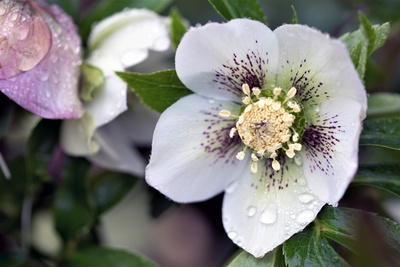10 great shrubs and hedging plants
Shrubs and hedging are the unsung heroes of the garden. These modest, low-maintenance stalwarts provide structure and create a framework to show off more glamorous plants. Choosing suitable shrubs for borders and hedging is an effective way to give your garden a whole new look.
Structural shrubs and hedging
These popular structural shrubs don’t have showy flowers, but they are a reliable presence in the garden with their evergreen foliage.
- Yew (Taxus baccata) – One of the few conifers that can tolerate hard pruning, it makes a good hedging or topiary plant and will cope with dry shade once established.
- Box (Buxus sempervirens) – The classic choice for topiary and low evergreen hedging, as it can be clipped to shape. In areas affected by box blight or box moth caterpillars, Euonymus ‘Jean Hughes’ or Lonicera nitida (shrubby honeysuckle) are good alternatives.
- Laurel (Prunus laurocerasus) – grows well in the sun or shade and makes an excellent hedging plant.
- Beech (Fagus sylvaticus) – a tree that can also be grown as a hedging plant. If trimmed in late summer, it will hold onto its brown autumn leaves until spring.
- Hawthorn (Crataegus monogyna) – a deciduous shrub ideal for native hedging, with white flowers in spring and berries in autumn.
Shrubs for flowers and scent
These low-maintenance flowering shrubs add both colour and structure – a must for any garden.
- Rockrose (Cistus purpureus) – drought-tolerant and low-maintenance, forming a neat dome covered in brilliant pink or pure white flowers all summer.
- Lavender (Lavandula angustifolia) – aromatic silvery foliage and very fragrant purple flowers. A must for bee-friendly gardens.
- Forsythia – brings fantastic colour in early spring, when the bare branches are smothered in a blaze of yellow flowers.
- Christmas box (Sarcococca confusa) – an unassuming shrub that grows happily in the shade, with small but incredibly sweetly scented flowers in the middle of winter.
- Hydrangea – an excellent shrub for shady spots, with big pink, white or blue flowerheads in late summer.
How to plant shrubs and hedging
Please follow our how to plant shrubs and hedging guide to provide your shrubs and hedging with a
- Water container-grown plants well before planting. Bare-root plants should be soaked in water for an hour to rehydrate them before planting.
- Dig a hole big enough to fit the rootball. If planting a hedge, it’s often simpler to dig a trench and then space the plants evenly along the trench rather than digging individual holes.
- Plant the shrub to be at the same level in the soil as it was in the pot. A sprinkling of mycorrhizal fungi over the roots can help the plant to establish a sound root system.
- Backfill with soil and firm gently around the trunk of the plant with your boot—water well.
- Water shrubs and regularly hedging in the first year after planting. Mulch annually in spring or autumn with compost or well-rotted farmyard manure.
Autumn is the ideal time to plant shrubs and hedging, so visit our centre soon to see our extensive range. Our staff are always happy to help and advise!




